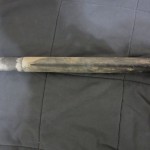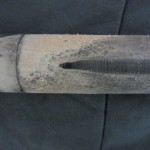This topic is discussed a lot in regards to body transitions with vent holes for altimeters.
Then I so happened upon this event during a flight that did not end in the best of ways. Just to give a little background it was about 70 degrees F outside, and my rocket was finished with 3-4 coats of clear coat. The rocket was the Blackhawk 38.
So my rocket was only waiting on the pad for a brief 5 minutes. While it was sitting outside for a good hour. But the rocket was not hot to the touch. It was a little breezy so I was not worried about my altimeter over heating.
The time came to launch and as you can read in the report the rocket did end up lawndarting, and could not receover any data. But the simulations with Open Rocket and RasAero had a rough peak velocity of 380MPH. So I can imagine as the rocket is traveling up and back down the outside skin of clear coat got soft, it did not neccesarily remove it but just softened it.
The nosecone was attached to the upper section with 2 Nylon Sheer pins. As you can see in the photo, when the rocket was entering the ground the sheer pin pushed the dirt in a way that represents Non Laminar Airflow.
I found this very interesting as the soft clear coat absorbed the dirt, initially I took the parts and gave them a bath to try to remove all the dirt that can be seen but it would not move. This is when I encoutered this weird occurance.


